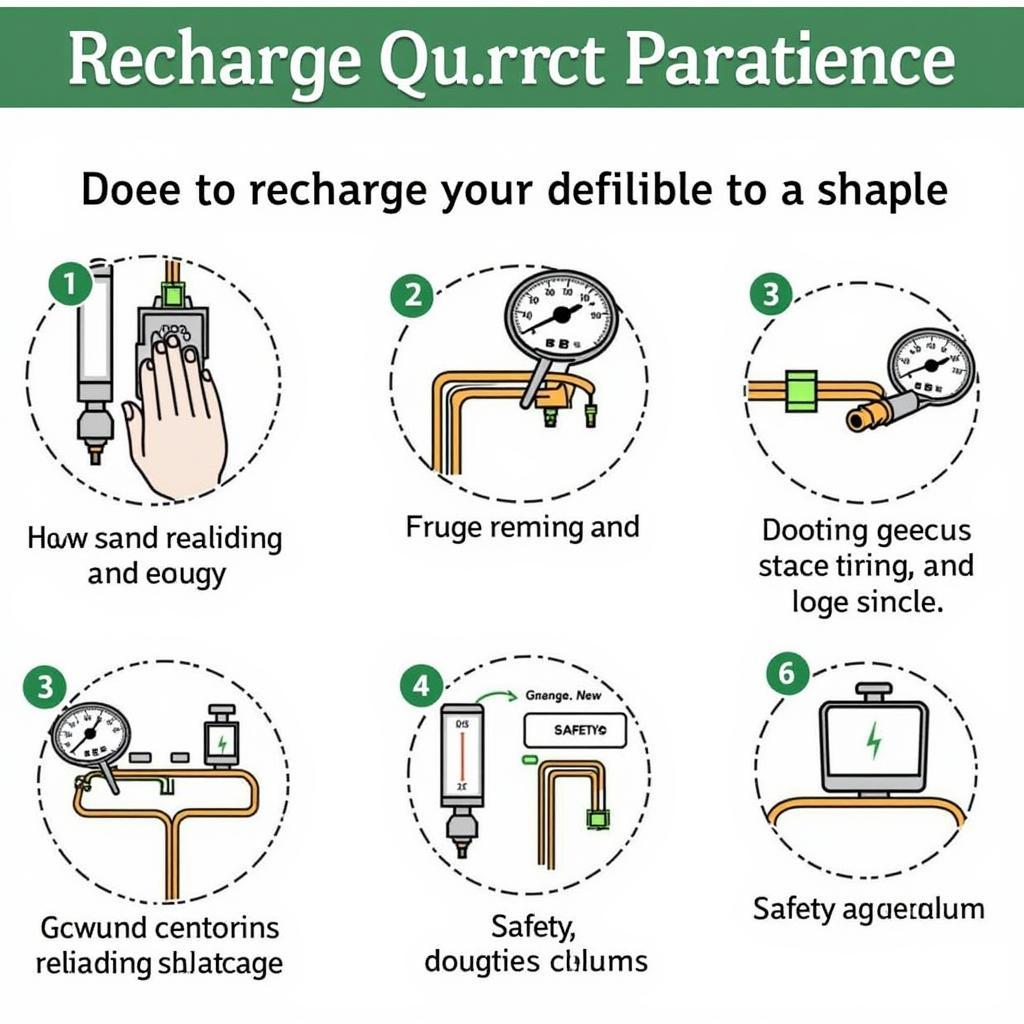Recharging your car AC is a vital part of vehicle maintenance, ensuring a comfortable driving experience, especially during hotter months. This guide dives deep into everything you need to know about recharging your car’s AC system, from understanding the process to choosing the right tools and techniques. We’ll also discuss common problems, preventive measures, and when to seek professional help.
Understanding Your Car’s AC System
Your car’s AC system works by circulating refrigerant, a special fluid, through a closed loop. This refrigerant absorbs heat from the cabin air and releases it outside, leaving you with cool, refreshing air. Over time, refrigerant can leak, leading to less effective cooling. Knowing when your AC needs a recharge is crucial for maintaining optimal performance. One early sign might be weak airflow from your vents. Another could be the air not feeling as cold as it used to. If you suspect your system is low on refrigerant, checking it is the first step. It’s important to note that a simple recharge may not always solve the problem. Sometimes, a leak needs to be addressed first. For instance, you might want to check your 12 volt car battery as it powers the AC system.
When to Recharge Car AC
Identifying the need for an AC recharge isn’t always straightforward. While decreased cooling is a primary indicator, other factors like unusual noises from the AC compressor or a noticeable refrigerant smell can point to a problem. Ignoring these signs can lead to more significant and costly repairs down the line. Regular maintenance checks, which often include an AC inspection, are your best bet to catch issues early. Remember, prevention is often better than cure, especially when it comes to car maintenance.
How to Recharge Your Car AC
Recharging your car’s AC can seem daunting, but with the right tools and knowledge, it can be a manageable DIY project. First, you’ll need an AC recharge kit, which you can usually find at auto parts stores. These kits typically include a refrigerant canister, a gauge, and a hose. Before you start, always ensure the car is off and parked in a well-ventilated area. Follow the instructions provided with the kit carefully. These instructions will guide you on connecting the hose to the low-pressure port of your AC system. The gauge on the kit will help you monitor the pressure and avoid overfilling. Overcharging can damage the system, so precision is key. Learn more about recharging your AC by visiting our detailed guide on how to recharge car ac.
Common AC Problems and Solutions
Beyond low refrigerant, several other issues can plague your car’s AC system. These can range from faulty compressors and leaks to electrical problems. Identifying the root cause is essential for an effective fix. While a recharge might offer a temporary solution, addressing the underlying problem is crucial. Sometimes, professional help is necessary, especially for complex repairs.
 Car AC Recharge Process
Car AC Recharge Process
Maintaining Your Car’s AC
Regular maintenance can help keep your car’s AC running efficiently. This includes checking for leaks, ensuring the system is clean, and having it inspected by a professional annually. These preventative measures can save you money and hassle in the long run. You can find valuable insights into car maintenance terminology in our glossary of car industry jargon in and out.
Professional vs. DIY Recharge: Which is Right for You?
Deciding between a professional recharge and a DIY approach depends on your comfort level with car maintenance and the complexity of the issue. While a DIY recharge can be cost-effective for simple low-refrigerant situations, professional help is often recommended for more complex problems. Professionals have the expertise and tools to diagnose and fix issues accurately, saving you time and potential further damage to the system. Moreover, they can pinpoint leaks and other underlying problems that a DIY recharge might mask. Thinking about electric car charging? Check out our resource on charging stations for electric cars near me.
Conclusion
Recharge car AC regularly to maintain optimal performance and enjoy a comfortable ride. Regular maintenance, including checks for leaks and professional inspections, can prevent more significant issues down the line. Understanding the signs of a low refrigerant and the recharge process empowers you to take control of your car’s cooling system and address issues promptly.
FAQ
- How often should I recharge my car AC? Typically, every 2-3 years, or as needed.
- Can I recharge my car AC myself? Yes, with the right tools and knowledge, it’s a manageable DIY project.
- What are the signs of a low refrigerant? Weak airflow, warm air from vents, unusual noises.
- Is it dangerous to overcharge the AC system? Yes, it can damage the system.
- How much does a professional AC recharge cost? It varies, but typically between $100 and $300.
- What causes AC leaks? Wear and tear, corrosion, damage to components.
- How can I prevent AC problems? Regular maintenance and inspections.
Common Scenarios
- Scenario 1: Warm air blowing from vents. Likely low refrigerant or a more serious issue.
- Scenario 2: Hissing noise from the AC. Possible leak in the system.
- Scenario 3: AC compressor not engaging. Could be electrical or mechanical failure.
Further Exploration
For information on parking solutions, see our guide on car park lot.
Need Help?
Contact us via WhatsApp: +1(641)206-8880, Email: [email protected], or visit us at 276 Reock St, City of Orange, NJ 07050, United States. Our customer service team is available 24/7.


